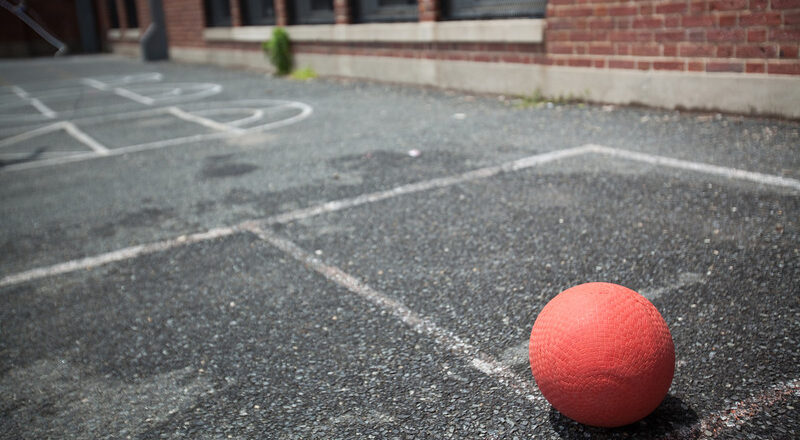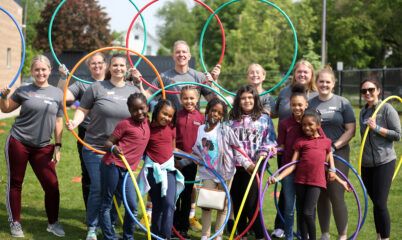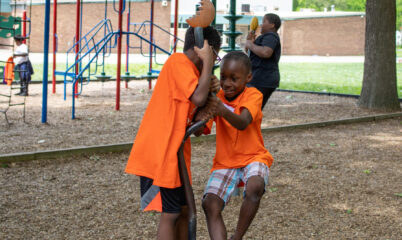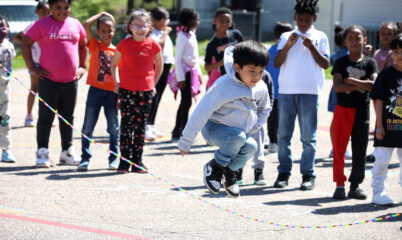The play opportunity gap
Play is critical for healthy child development as it is a safe way for kids to experiment and practice building relationships and cooperating with others. And yet, even in normal circumstances before COVID-19, there wasn’t an equal opportunity for every kid to play. We need to make sure this disparity does not get worse in the return to school this year.
“There are significant disparities in access to recess, with students of color and those in urban, low-income communities often missing out on these important developmental opportunities.” Rebecca London, Associate Professor of Sociology at the University of California in Santa Cruz explains.
When it comes to recess, three key questions define the opportunity gap:
(1) Is recess part of the daily schedule?
(2) Is recess withheld as a punishment for bad behavior or missed schoolwork?
(3) Has the school taken steps to make recess a safe, healthy, and inclusive experience?
For many schools, there will be limited or no recess this year; some schools are only offering limited movement breaks as opportunities to play. Although this research was defined by recess in a pre-COVID-19 world, we need to ask ourselves the same questions this school year about access to play of any kind. Is it built into the schedule? Can we prevent it from being taken away as a punishment? Is it safe and inclusive?
What are the impacts of COVID-19 on kids from a trauma lens?
“We know from past pandemics that you’ll see increases in traumatic experiences. Quarantines and pandemics do become very traumatic experiences for children. Past research on quarantines showed increased trauma rates as a result of that,” said Will Massey, assistant professor at Oregon State University and College of Public Health and Human Sciences.
The pandemic has caused trauma for all children, and those experiences vary widely, child to child and community to community. For example, some kids have lost family members, some kids are food insecure, some kids have lots of places to run around and some are inside, some children’s parents have lost their jobs and their families are facing economic insecurity, and more. And some children, especially Black children and their families, are experiencing added trauma based on the unjust killing of Black men and women in their communities.
As was noted in Education Week, “Before the pandemic, federal data suggested nearly half of all U.S. children had been exposed to at least one traumatic event, and more than 20 percent had been exposed to several. This year, as the nation copes with virus, a recession, and racial unrest, the numbers are likely to be higher”
When researchers studied adverse childhood experiences (ACEs), they found that experiencing multiple adversities is a predictor for certain outcomes in life. And, for some children, the trauma they’ve endured as a result of COVID-19’s impact on their lives will add another layer.
“In a pandemic, certainly the trauma of isolation and quarantine affect not just academic outcomes because of learning loss, but they actually affect health, brain development, stress, and anxiety. And the impact of that trauma lasts. They’re not just one time things; they last a lifetime with children. So figuring out ways to mitigate the stress and to mitigate these ACEs is really important, especially for the children who are experiencing them at the highest levels,” said London.
What does that mean for kids on their return to school?
“We should expect anything and everything from the most unusual behaviors you could imagine. Some kids might regress and not want to go back to school. Some kids will be exclusive, bullying, etc. Kids who are used to being alone might be struggling with shared cooperation and collaboration; they may need to relearn those skills. You can expect a range of emotions,” said London.
Fostering safe, inclusive communities that allow for skill development is going to be especially challenging this year as a result of widespread and varying trauma.
“If adults view behaviors through the lens of ‘this kid is just trying to survive,’ maybe we can be more patient, understanding, and empathetic when we see something we weren’t expecting,” said Massey.
Our partners and friends throughout the educational community should be very thoughtful when reacting to a student’s behaviors, especially as we return to school.
Why play?
Play can be a tool for healing.
“For children, play is going to be a fundamental need right now because there has been so much taken away in terms of trust, stability, and predictability,” said Will Massey. “We know in regular times there’s huge benefits of physical activity on cognitive health, social health, and emotional health. In response to trauma and helping the body to re-regulate from the dysregulation that might be caused, this time is going to be absolutely critical to supporting children’s needs for healthy development, school staff can be that anchor.”
This idea of play being a mitigating factor of trauma is important. If every kid is experiencing trauma–some more than others–we need to find a way to mitigate the potential negative long term effects for this generation. Play is a natural, safe way for kids to build relationships and trust, practice empathy, and be physically active. In its simplest form, play is a joyous experience which encourages laughing and smiling; when kids experience those emotions their bodies produce oxytocin which mitigates the negative impacts of trauma.
“I hope that educators recognize that they’re not going to see the learning growth that they’re expecting if they don’t first attend to the trauma through play,” said London.
So, as an education community, we need to go back and ask ourselves the critical questions related to the play opportunity gap so that we can ensure equitable access to play is intentionally designed and promoted in our schools. Is it built into the schedule? Is it taken away as a punishment? Is it safe and inclusive? By intentionally closing the play opportunity gap and using play as a tool to heal from trauma, we’ll be able to get back into learning, help kids develop, and allow for children to experience the childhood they deserve.
Try practical Playworks implementation tips and tools



